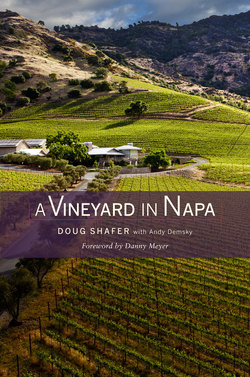Читать книгу A Vineyard in Napa - Doug Shafer - Страница 20
ОглавлениеELEVEN
Hillside Cabernet
In 1978 it felt as if a spell had been broken. The year started with near-normal winter and spring rains, which pulled us out of the long drought of the previous years. The year went on to become one of those growing seasons when everything goes right: a summer of warm, sun-flooded days with chilly evenings, offering no rain pressure as harvest approached. The sort of year grapes and winemakers thoroughly love.
By early September Dad was in countdown mode. Every morning he was up before dawn gathering sample grapes and testing the sugar and acidity levels. Finally, he knew it was time to harvest. Of course to do that he needed a picking crew. He started making phone calls to all the vineyard management companies. The first two or three, including his buddy John Piña, couldn’t help him. Their crews were already scheduled. He kept trying, calling up and down the Valley looking for a group of guys who could come out and pick his 7 acres of Cabernet. Time and time again the people on the other end of the phone line said, apologetically, they couldn’t help him, because their guys were already busy. Dad grew more anxious each time he struck out. Somewhere there had to be a crew.
In this new era of post-Judgment of Paris optimism—with increasing planting and rising prices—all the older, more established wineries in the Valley had first dibs on hiring picking crews, and an upstart vintner such as John Shafer, who didn’t even have his first vintage in the barn yet—for that matter, didn’t even have a barn—would just have to wait.
The temperatures were rising. It went from hot to hotter. The sugar levels in the grapes were spiking. With each passing hour, Dad felt sicker and sicker looking up the hill at that 7 acres. The grapes were getting too ripe; sugar levels were rising past the then-benchmark of the 22.5 degrees to 23 degrees Brix range.1 Past that sugar reading was the edge of the viticultural earth. It was like one of those ancient maps, where the cartographers simply wrote “Hic Sunt Dracones”—“Here there be dragons”—when they reached the limits of known lands. In a similar vein, who knew what happened after 23 degrees Brix? It could not be good.
When he finally rounded up a crew—three days too late—with sugar levels of 24.5 degrees and 25.5 degrees Brix, Dad figured he’d just make the best of it.
His crew picked seventeen tons, which Dad hauled up to St. Helena to be crushed and fermented at Markham. Then he had the newly fermented juice trucked to Van Asperen’s winery, Round Hill, where it was put into oak barrels, two-thirds of which were French and one-third of which was American.
During my Christmas break from U.C. Davis, I joined Dad and the crew at Round Hill as they racked the wine. Racking is an age-old method of clarifying a wine by pumping it from one barrel to another, separating the liquid from the solids and sediment. In this case we were moving the wine from barrel to barrel and then cleaning the old barrels out for further use. It’s a time-consuming process.
At lunchtime Dad and I were sitting outside with the crew under some trees, eating sandwiches and trying some of this Cabernet we’d been racking all morning. It was the first time I’d had a chance to try Dad’s wine and to do so with a crew like this made me hope like crazy that he had put together something drinkable. I knew he’d picked it later than anyone advised and that it had been trucked around the Valley in various states. My heart rate picked up a little as Round Hill’s winemaker and all the guys in the cellar crew tried it … and nodded, tried it again and … really seemed to like it. It was still just three months old, had been roughed up from racking and riding around in trucks, and it hadn’t gone through malolactic fermentation (a second fermentation nearly all red wine goes through), so it wasn’t ready for prime time by any means, but it sure seemed to have some beautiful potential—great aroma, lots of dark, rich fruit, and tannins that, in spite of its extreme youth, didn’t seem green or overwhelming, which you’d more or less expect of a wine that young in that era. It’s a moment that’s always stayed with me. The sense of relief Dad and I shared was huge.
The wine’s tour around the Valley wasn’t quite finished. After the wine was racked, Dad borrowed a flatbed truck from Joe Phelps and hauled the forty-odd barrels from Round Hill back here to our property and placed them in the old stone cellar located below Alfonso’s house.
